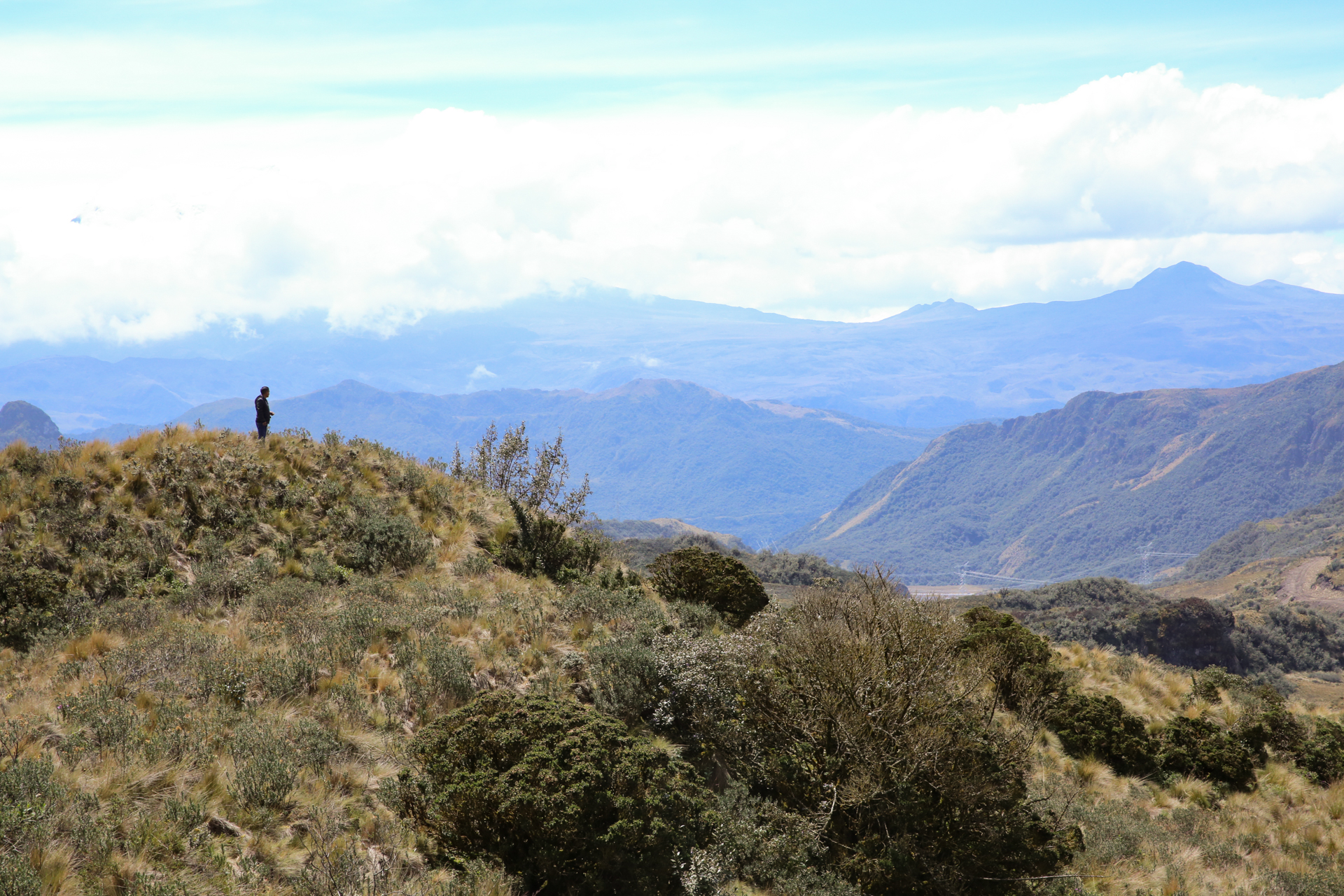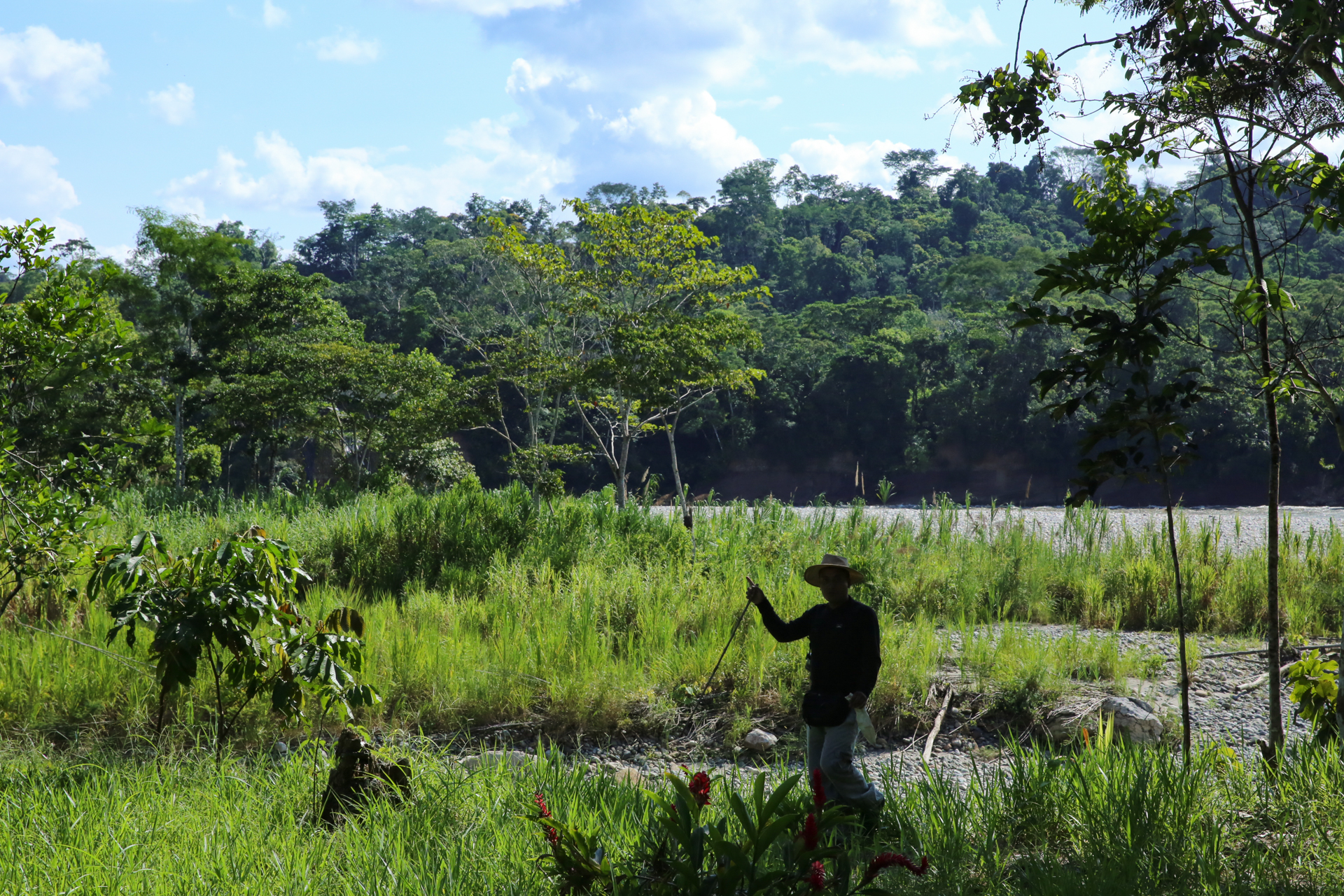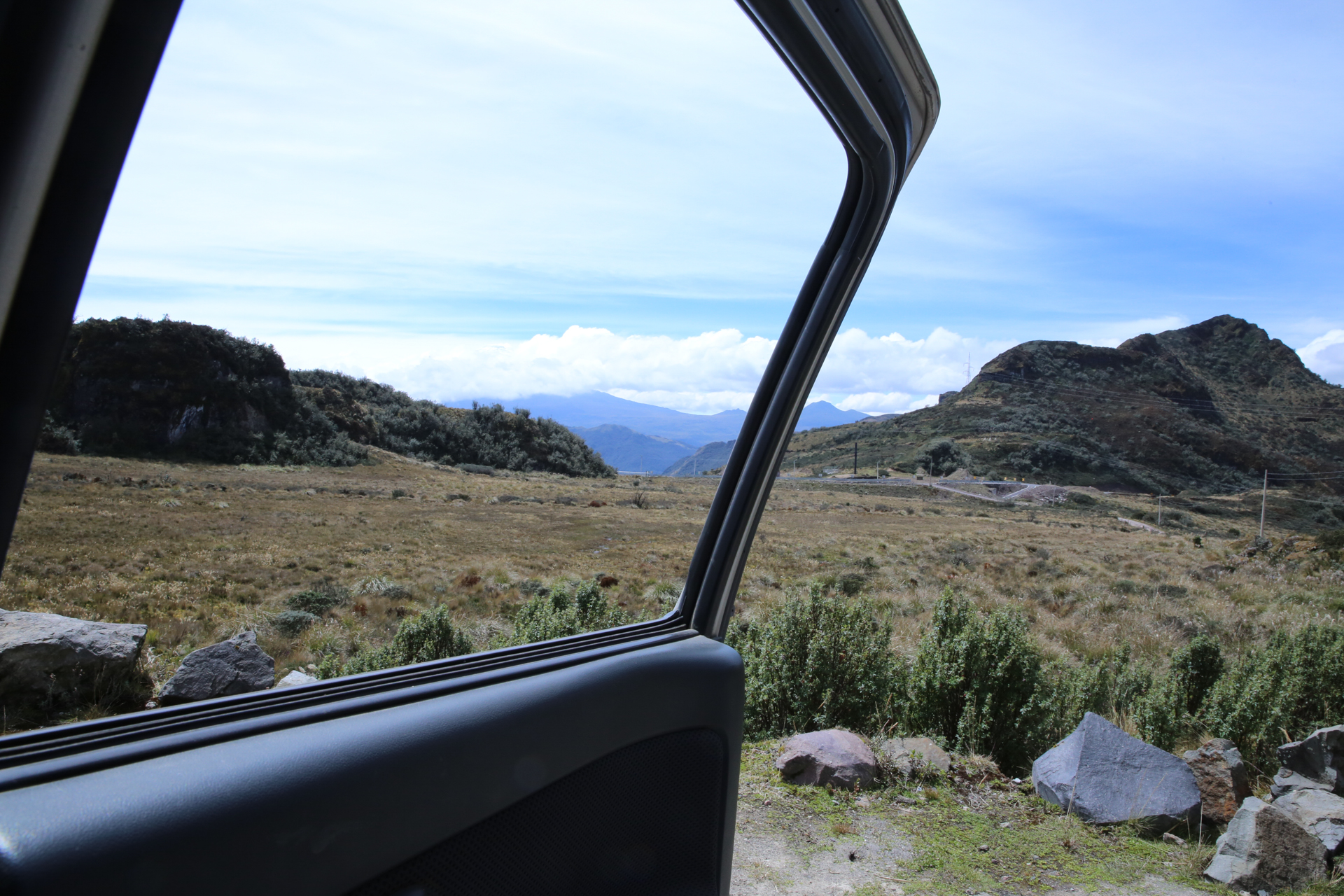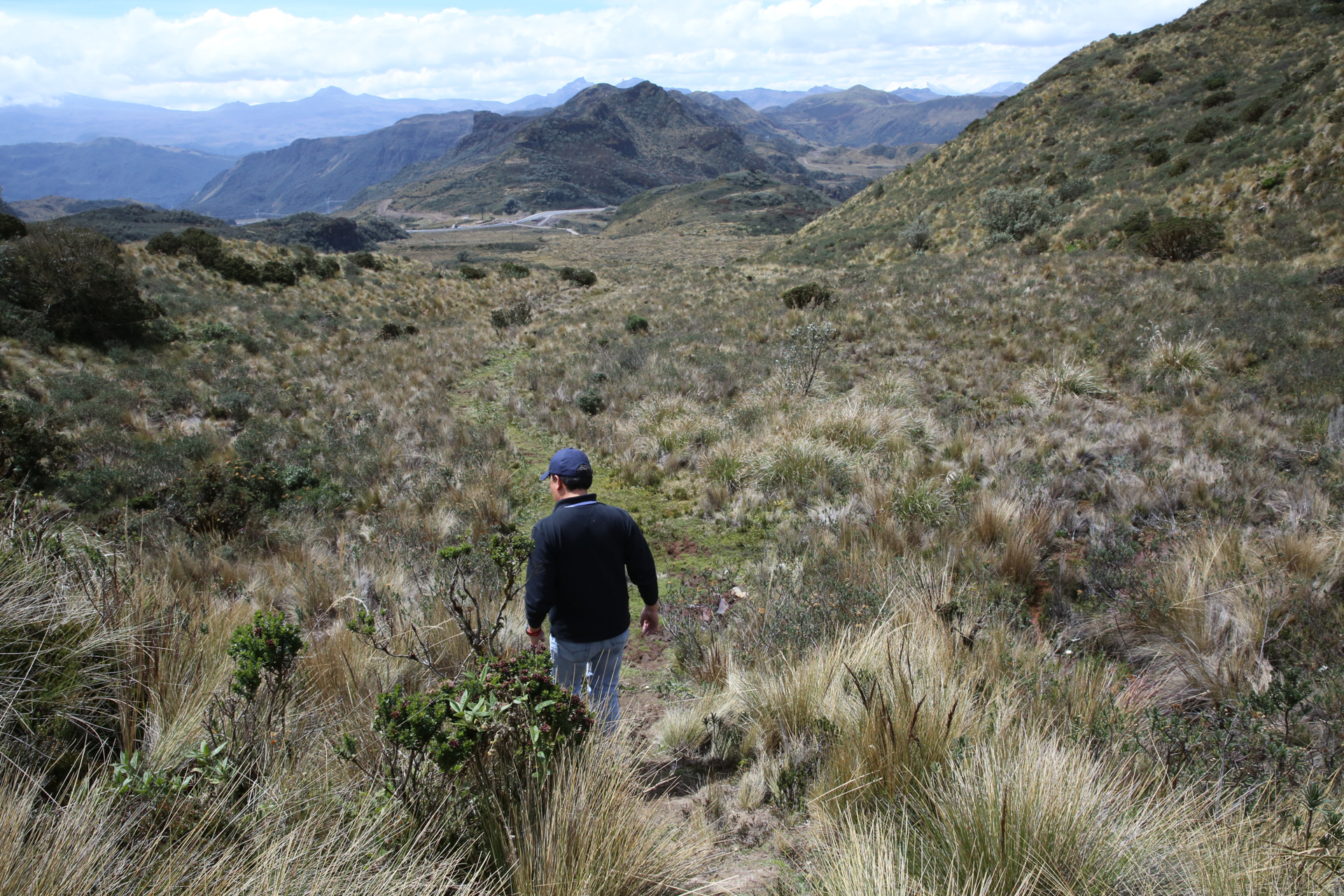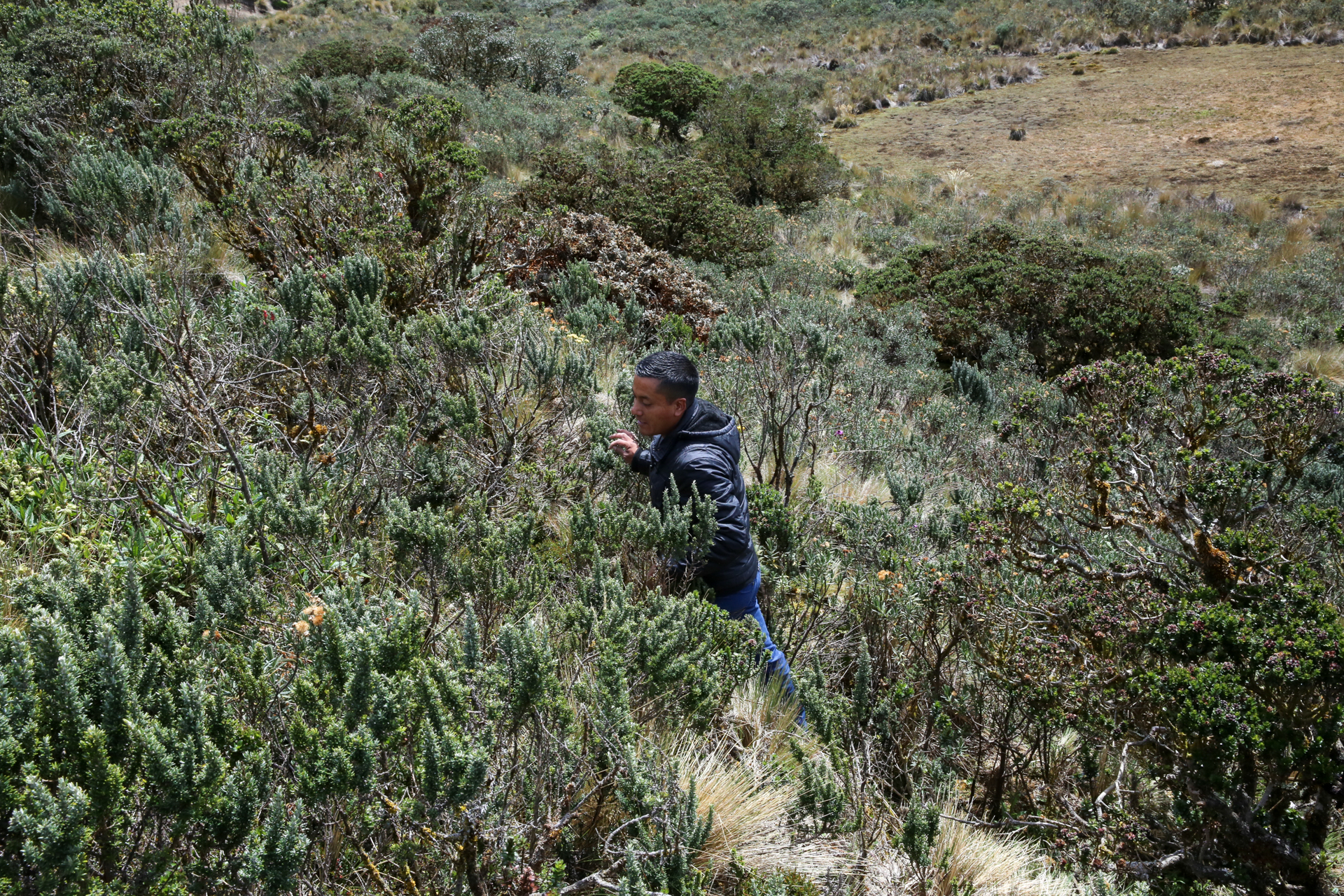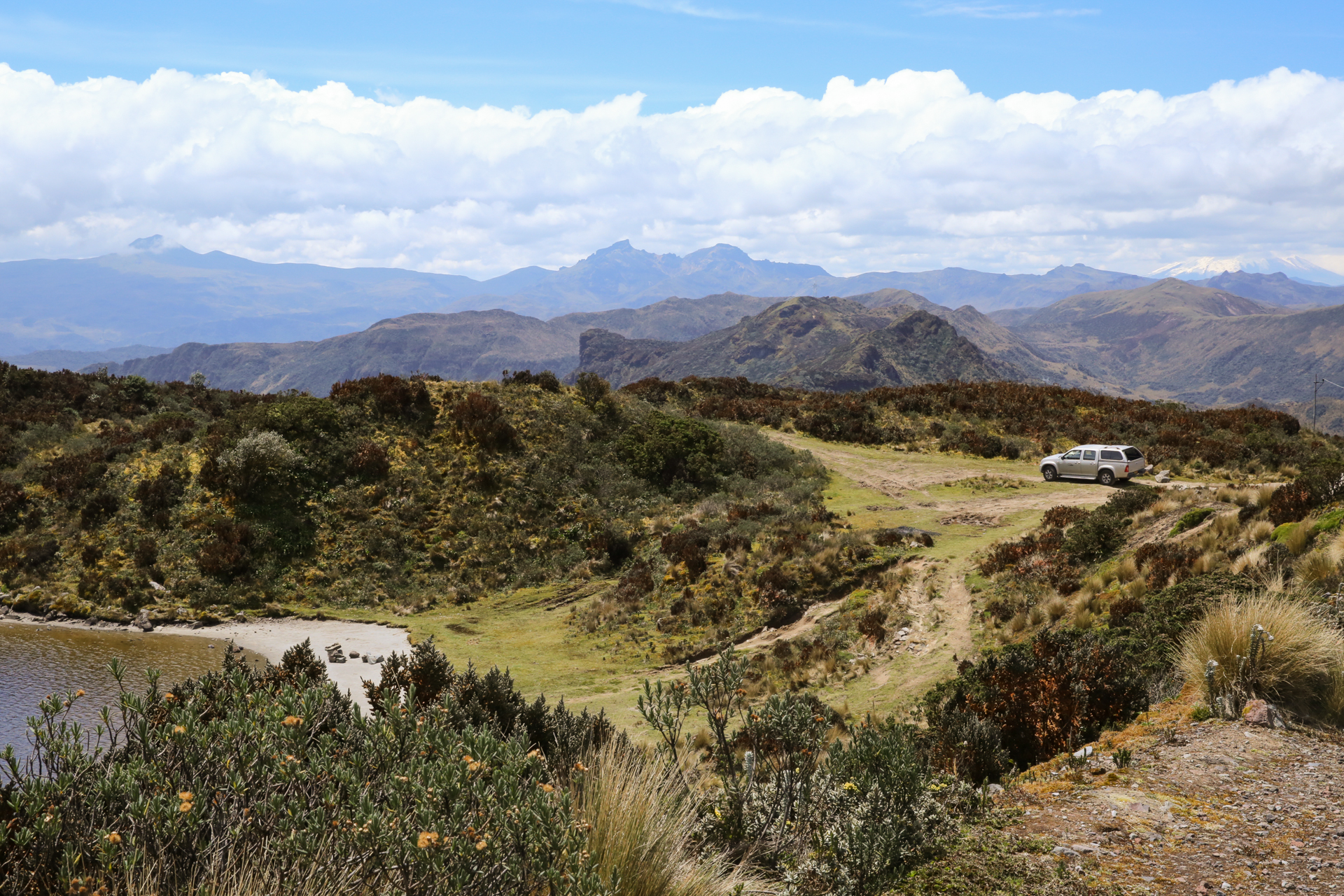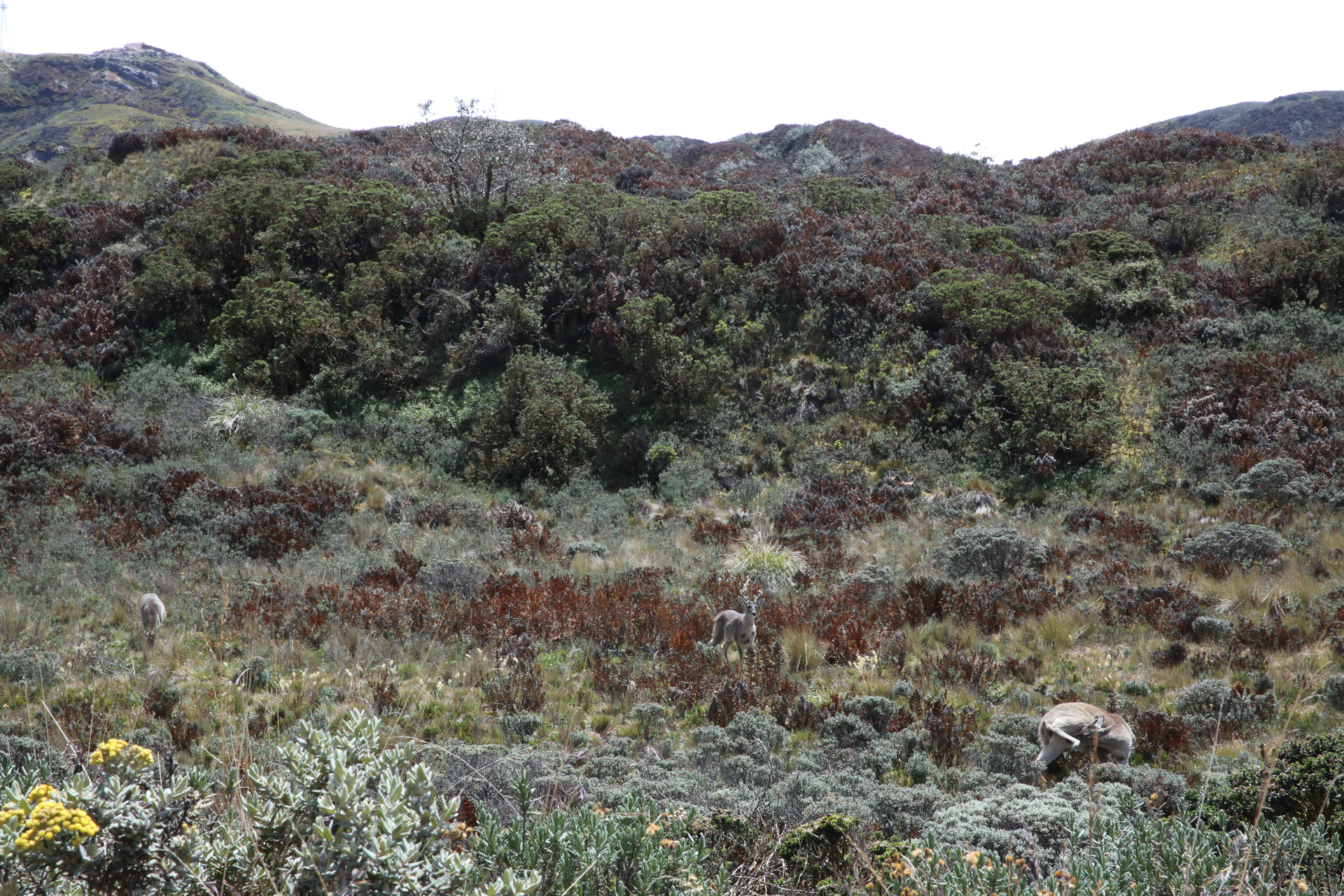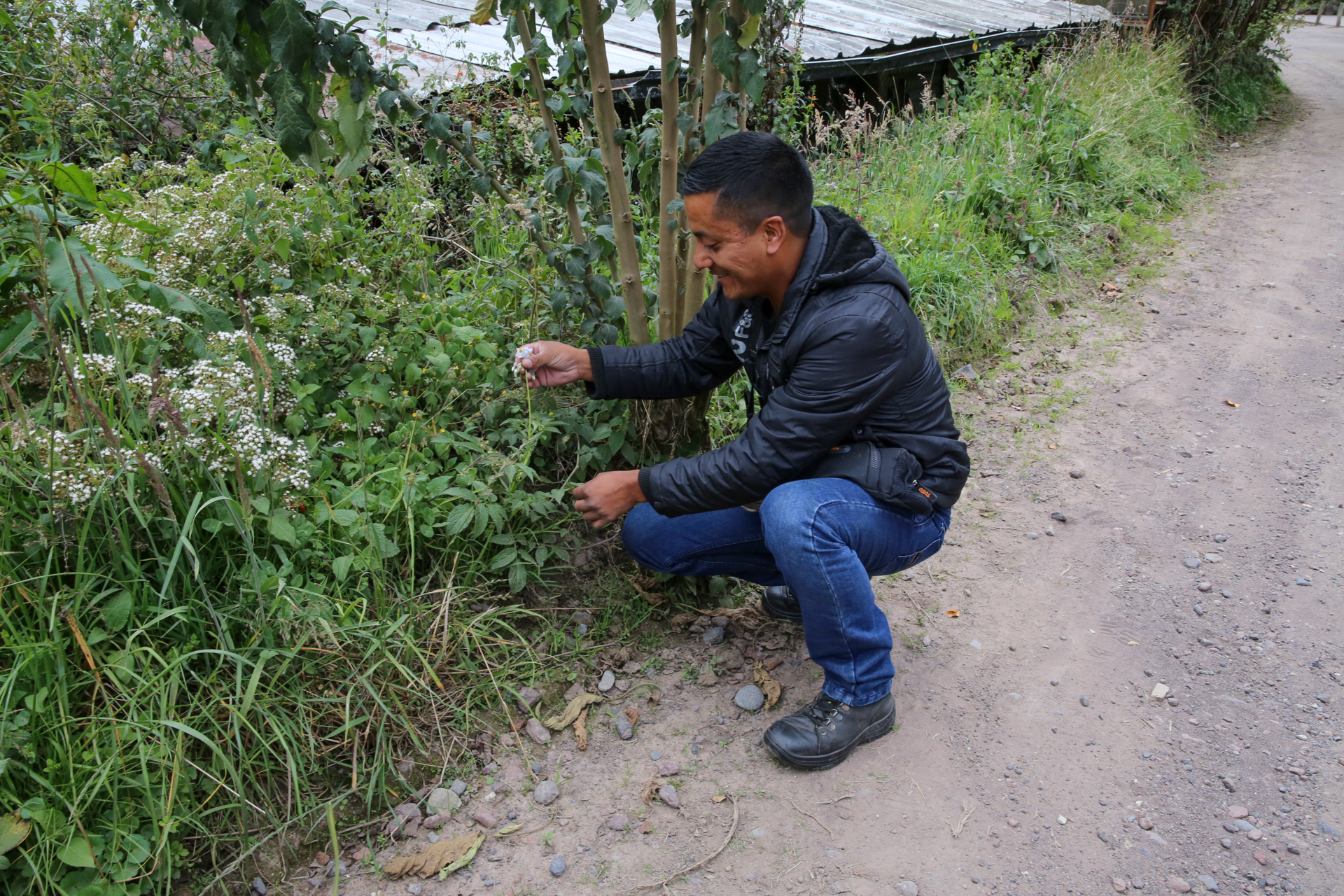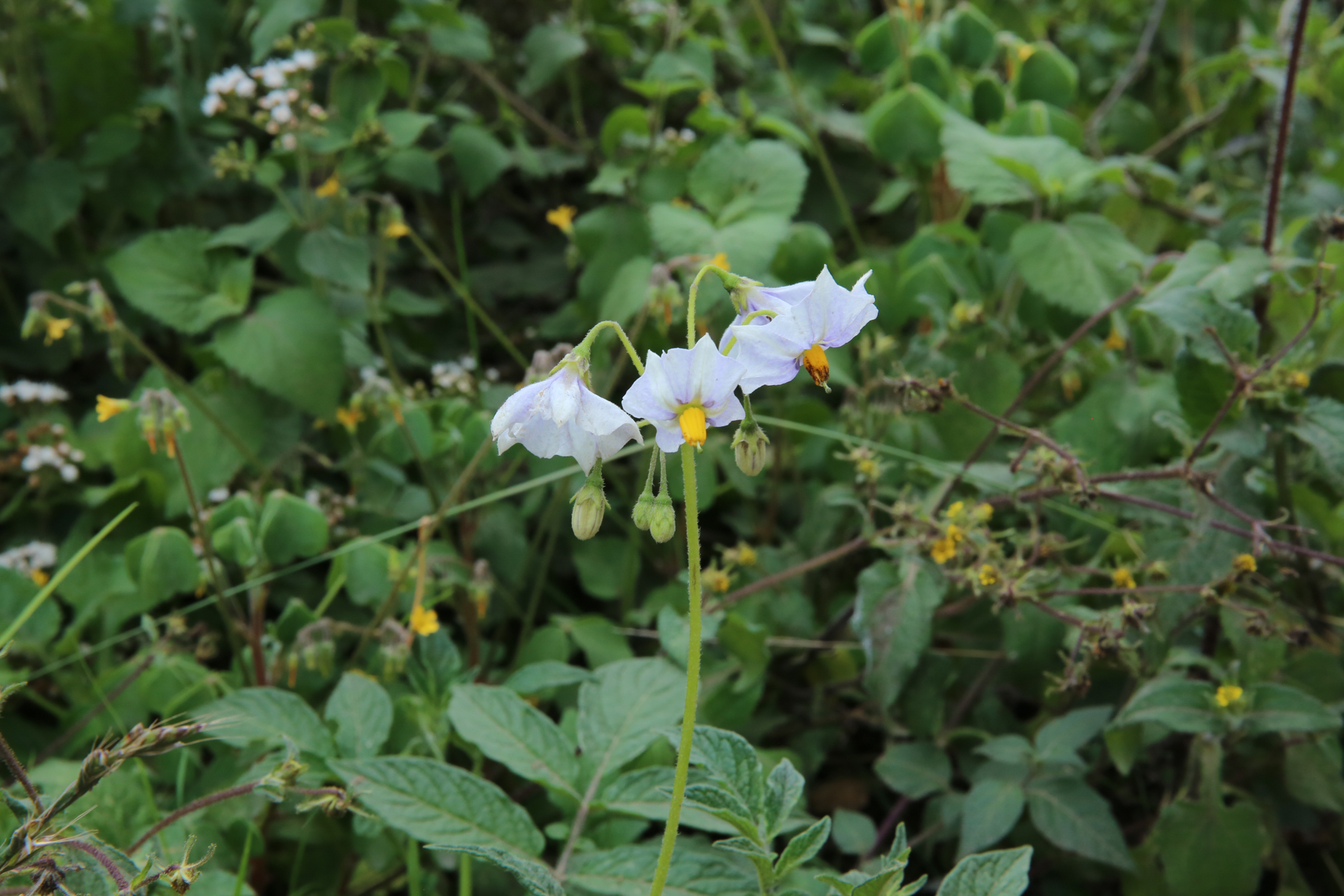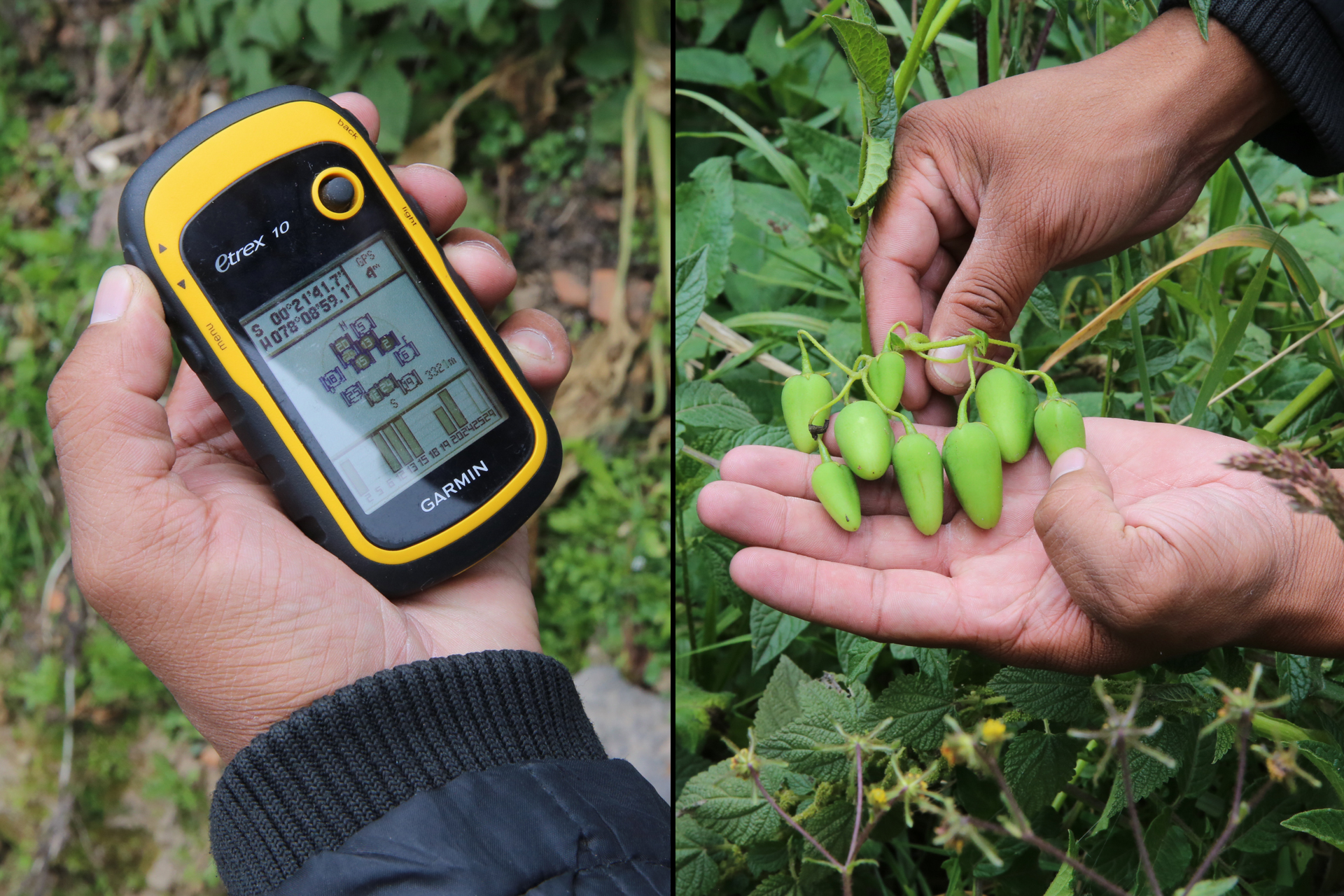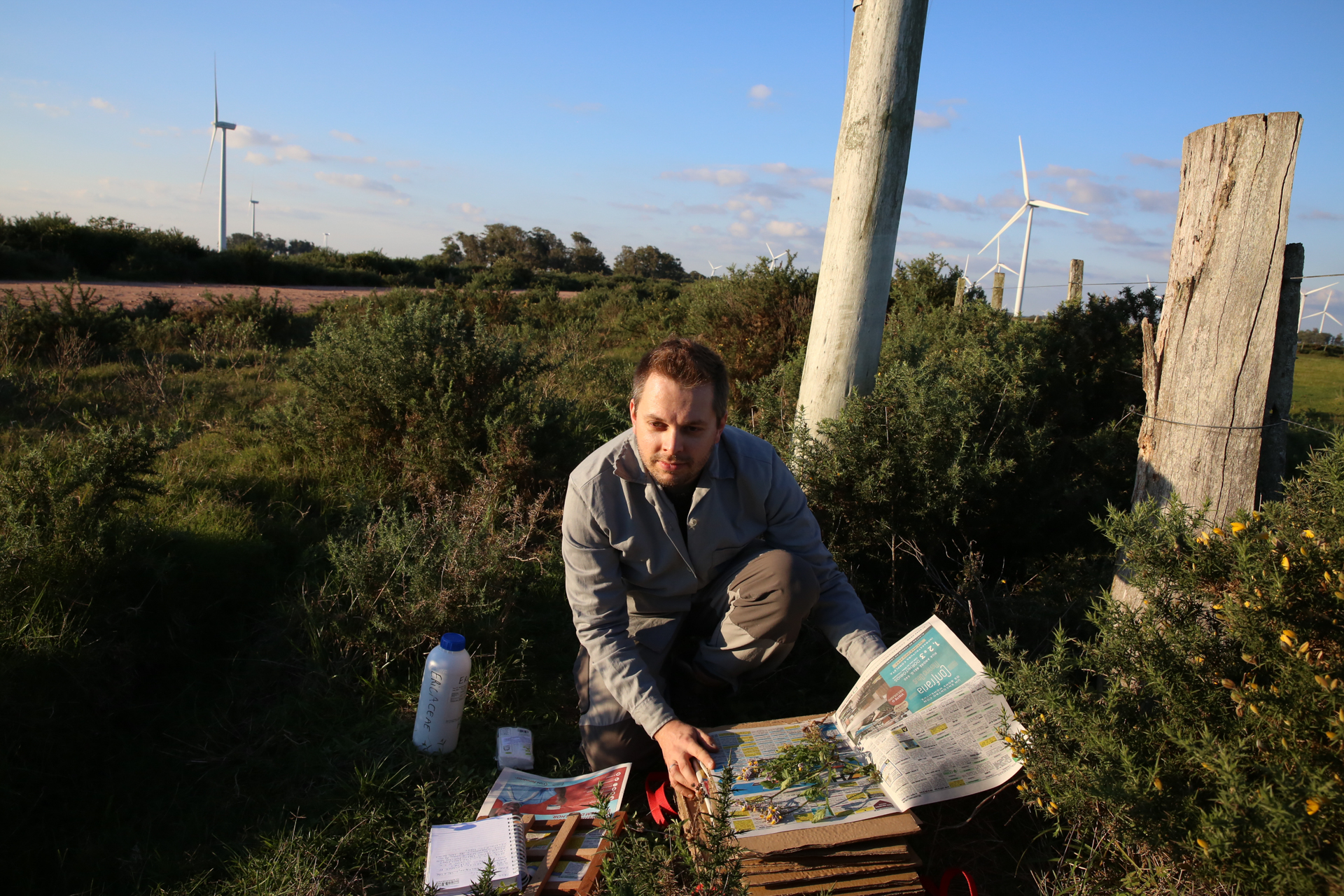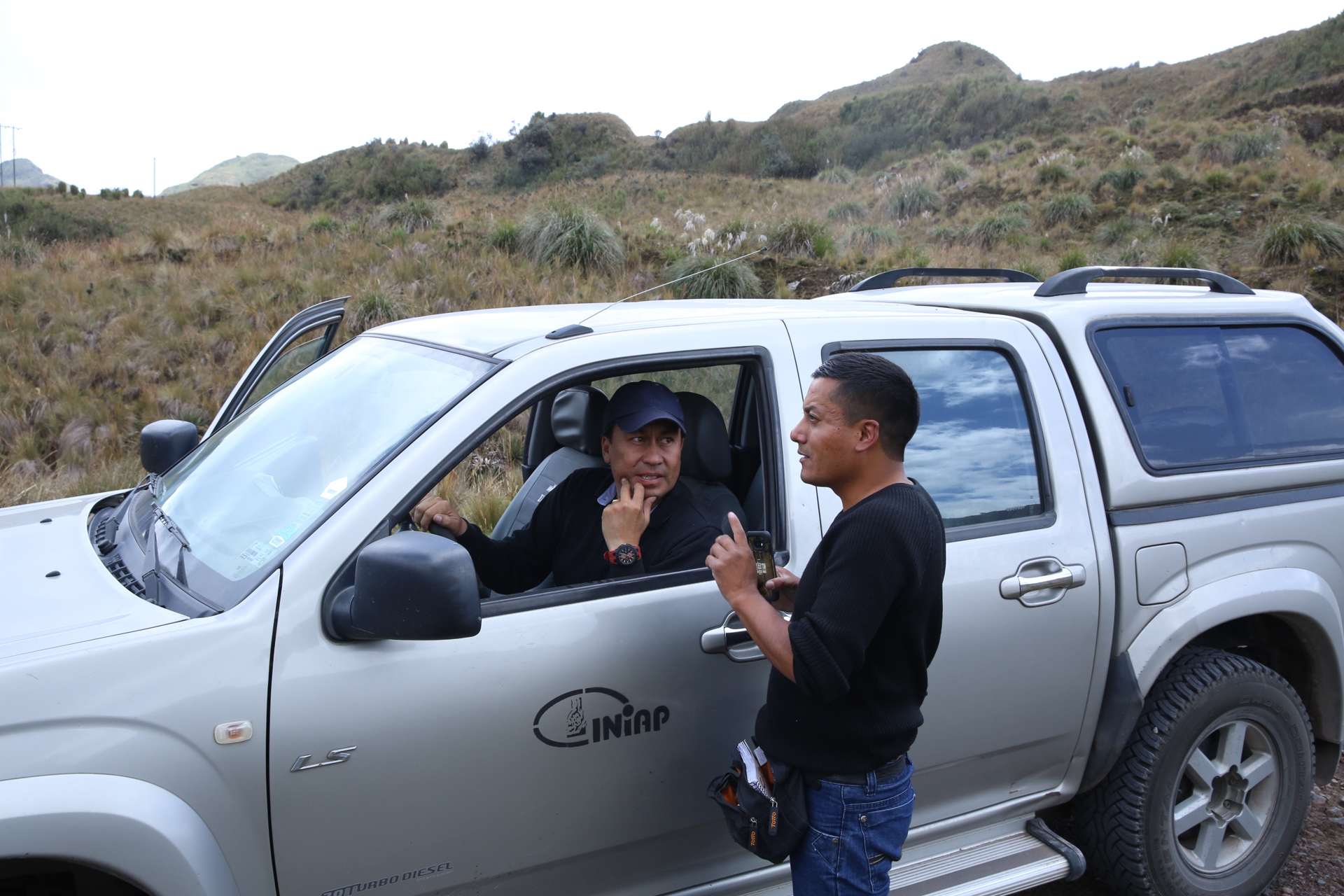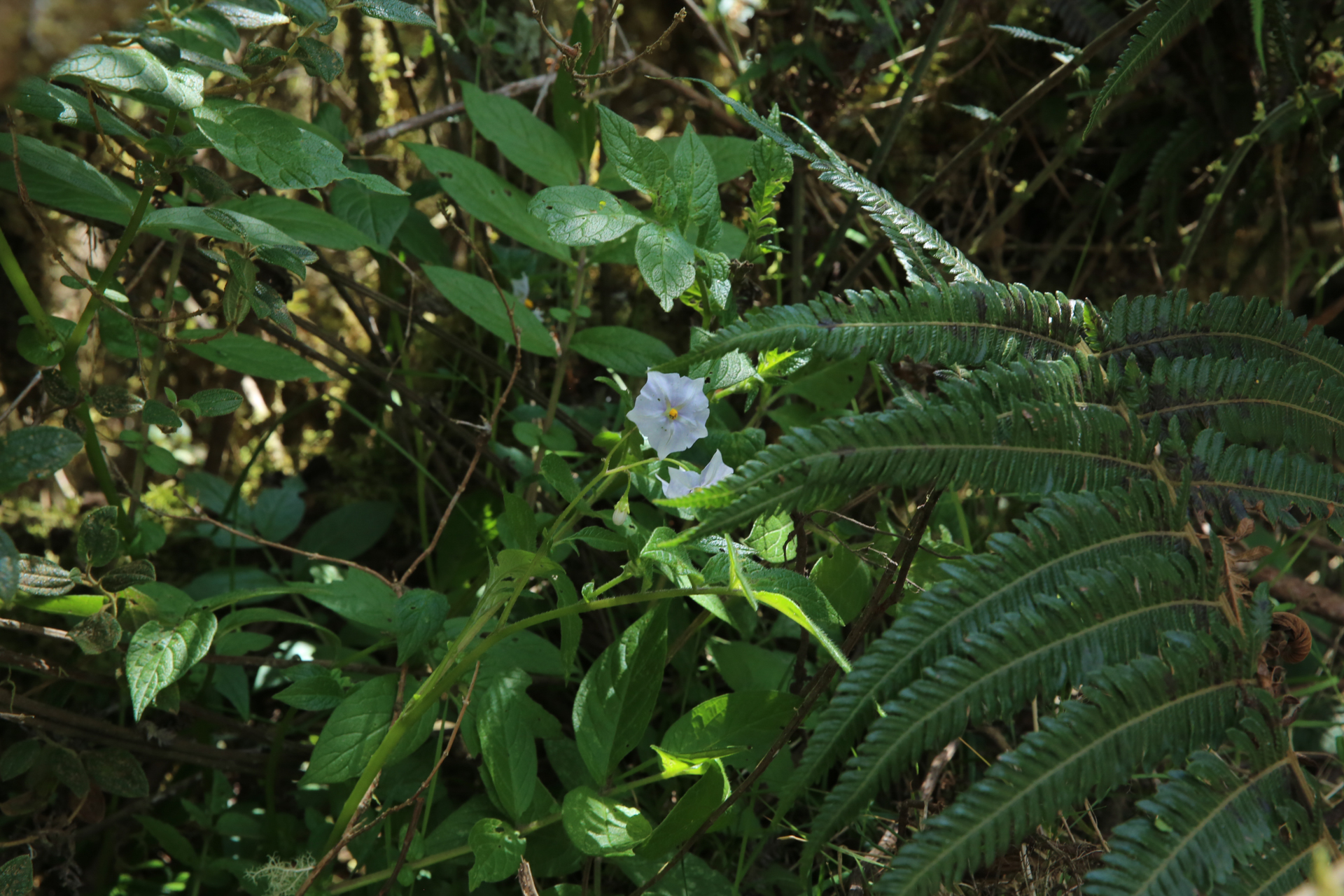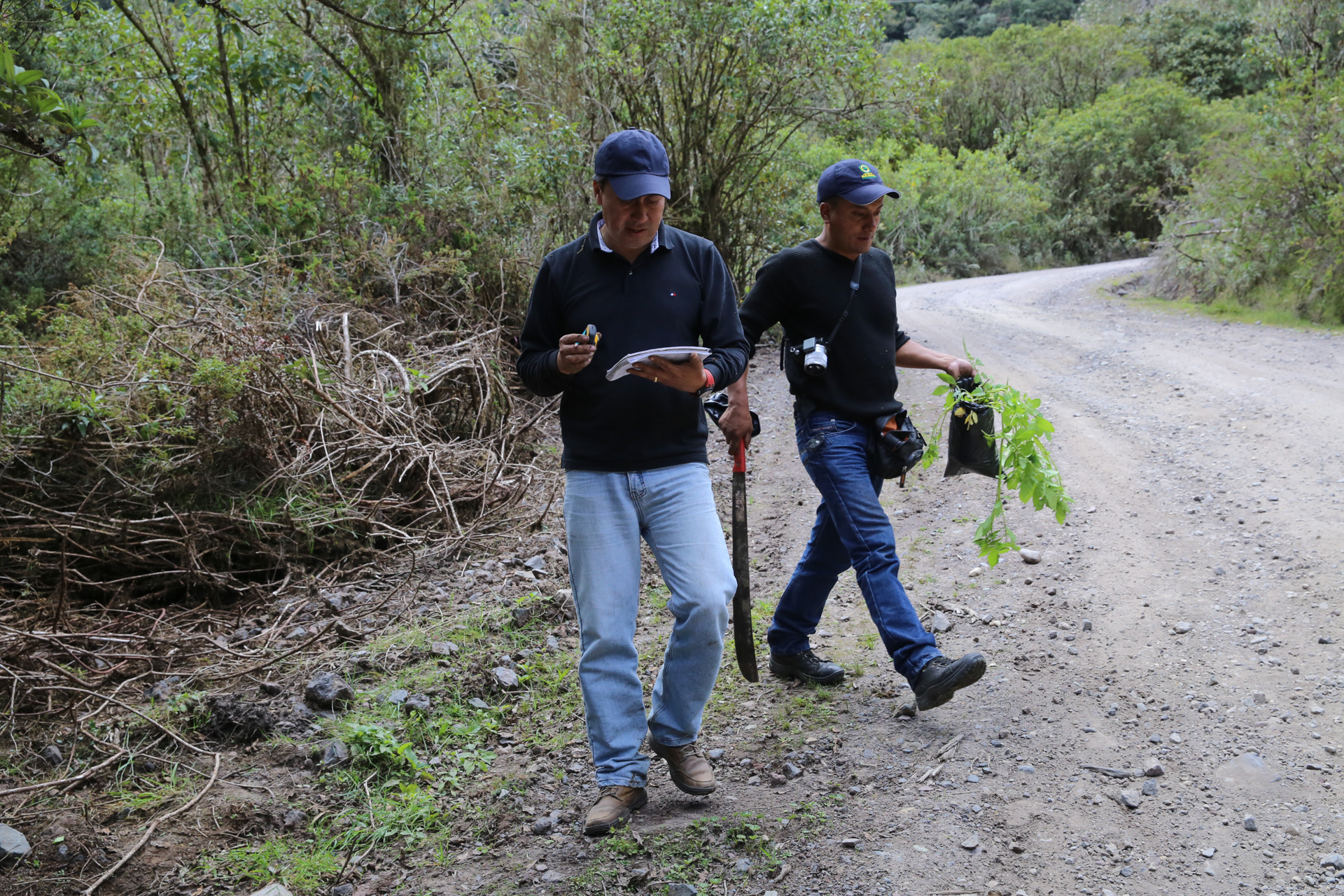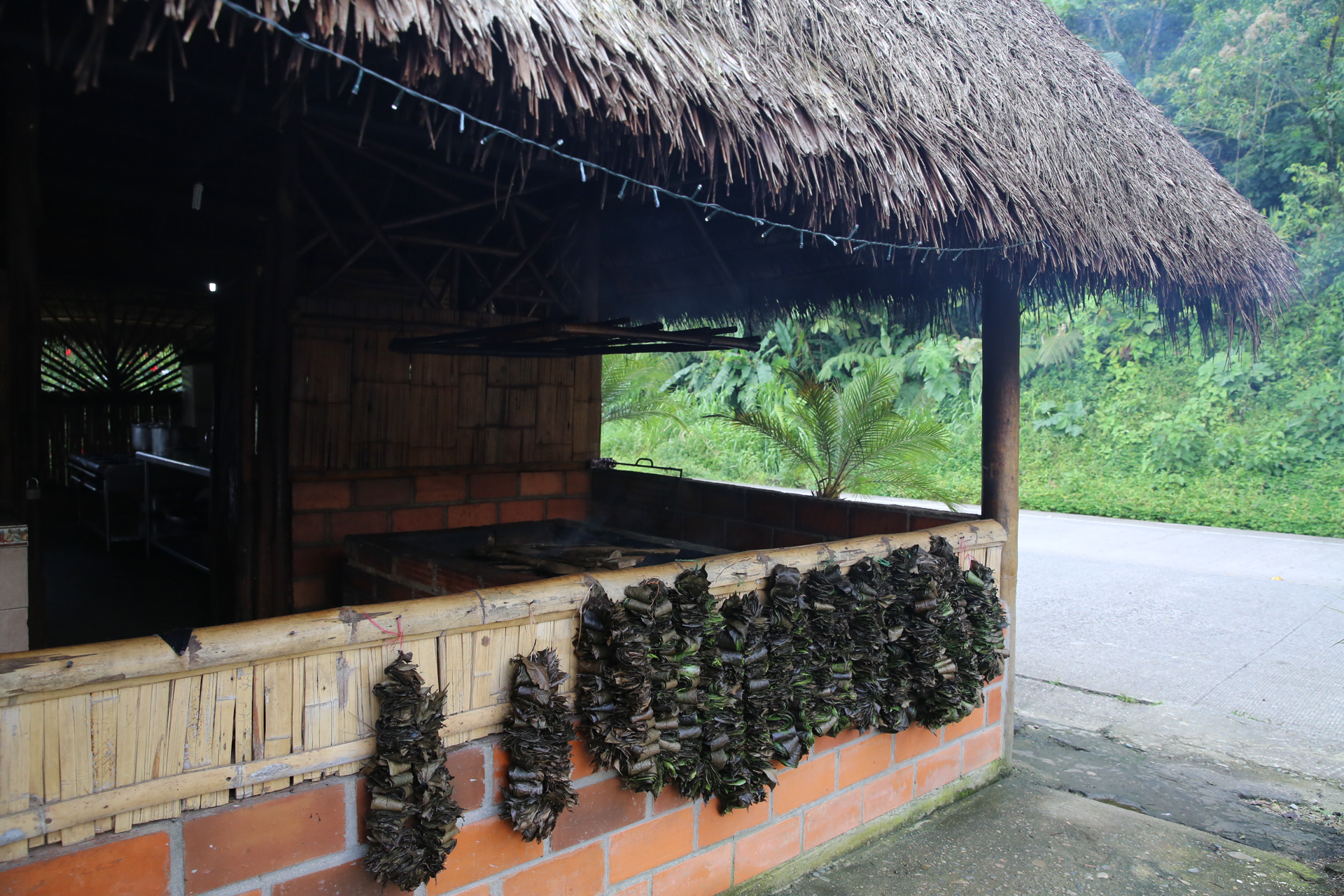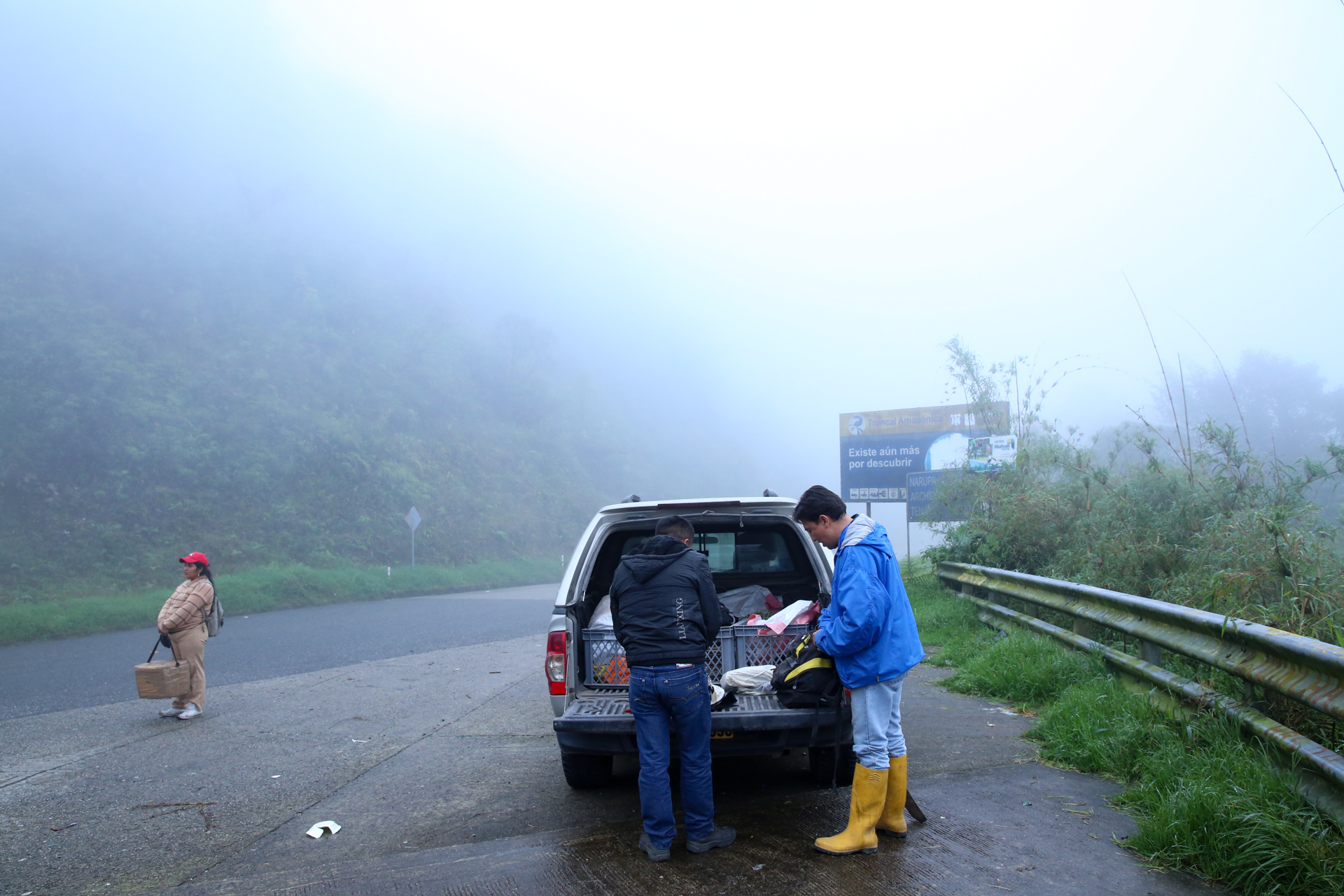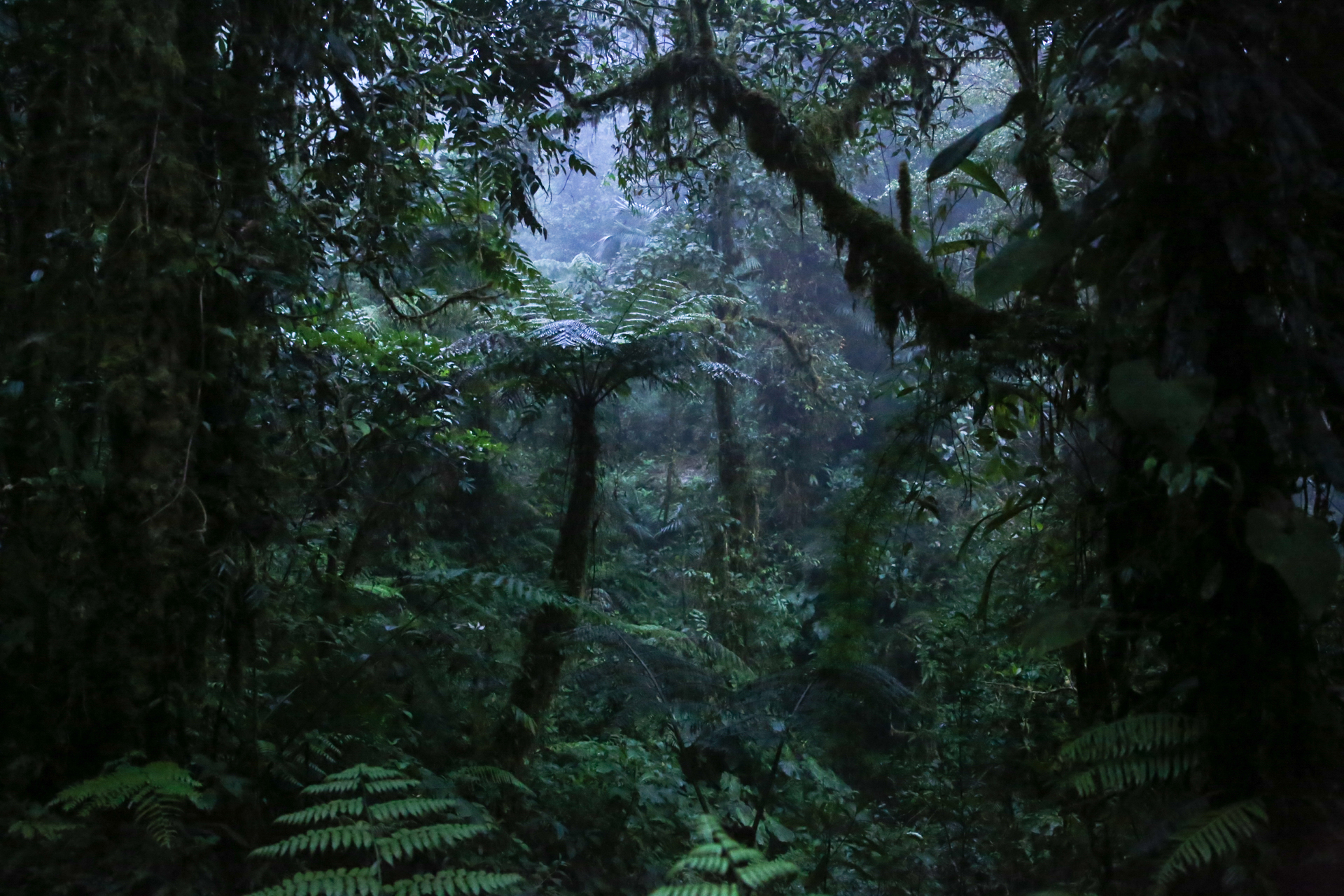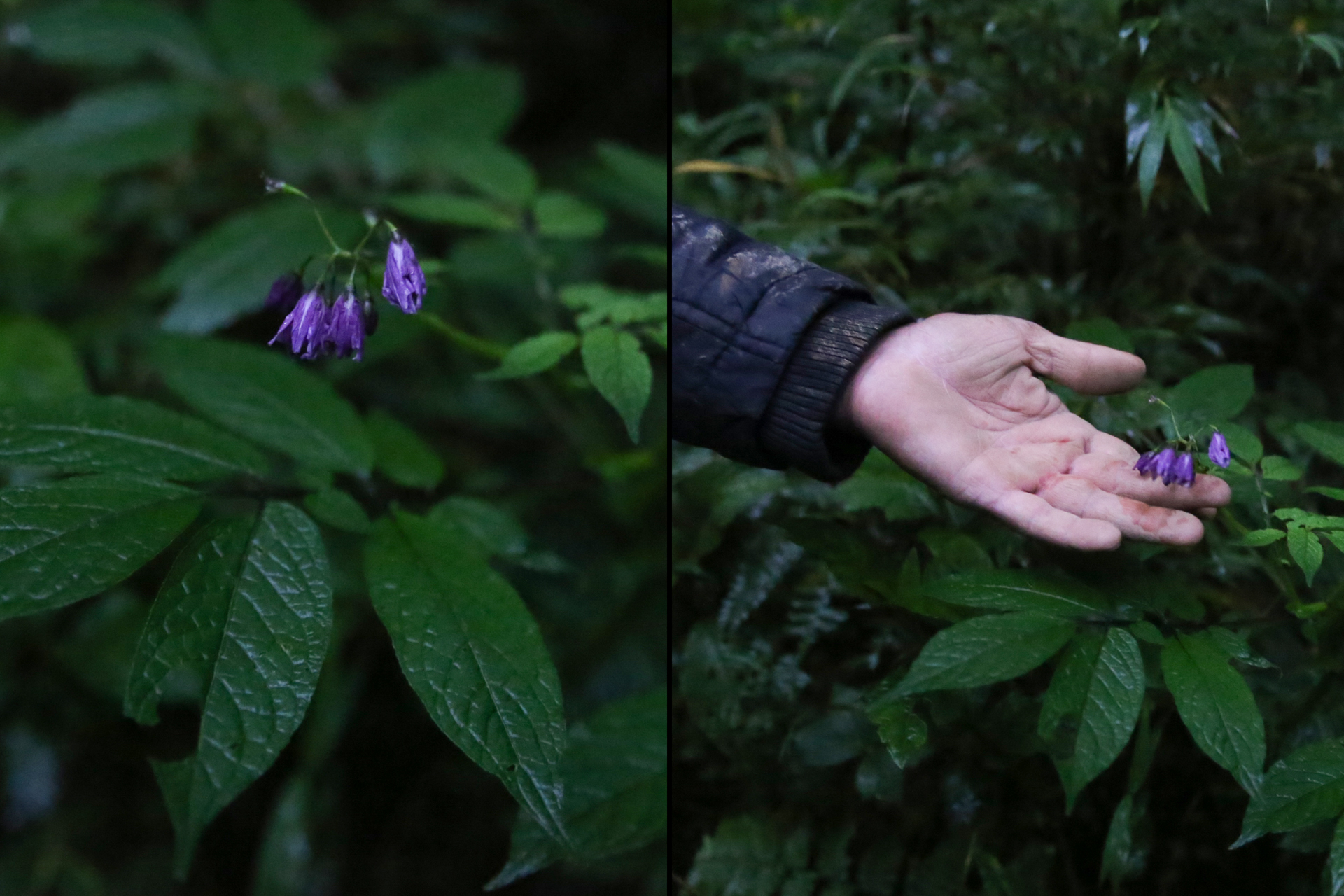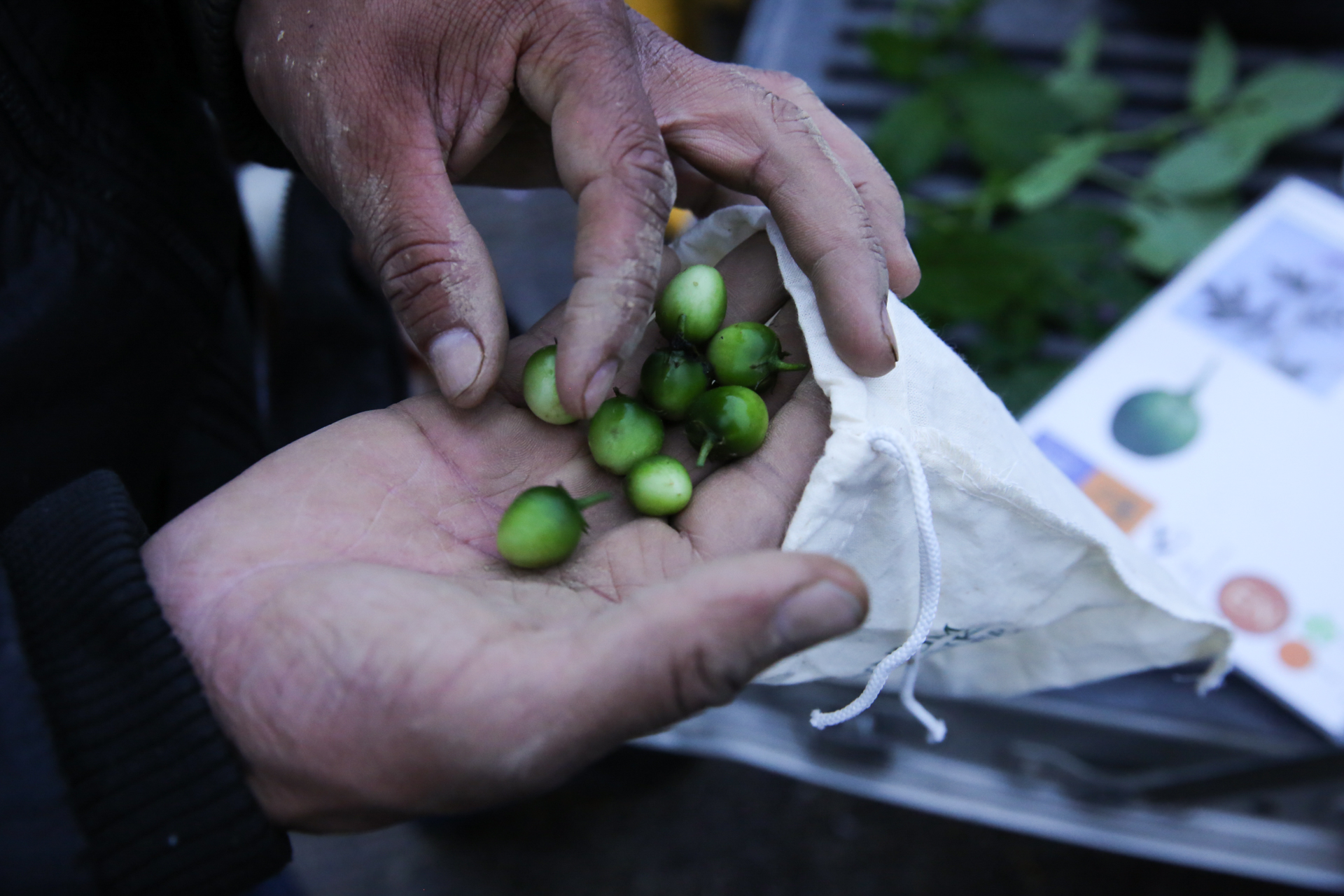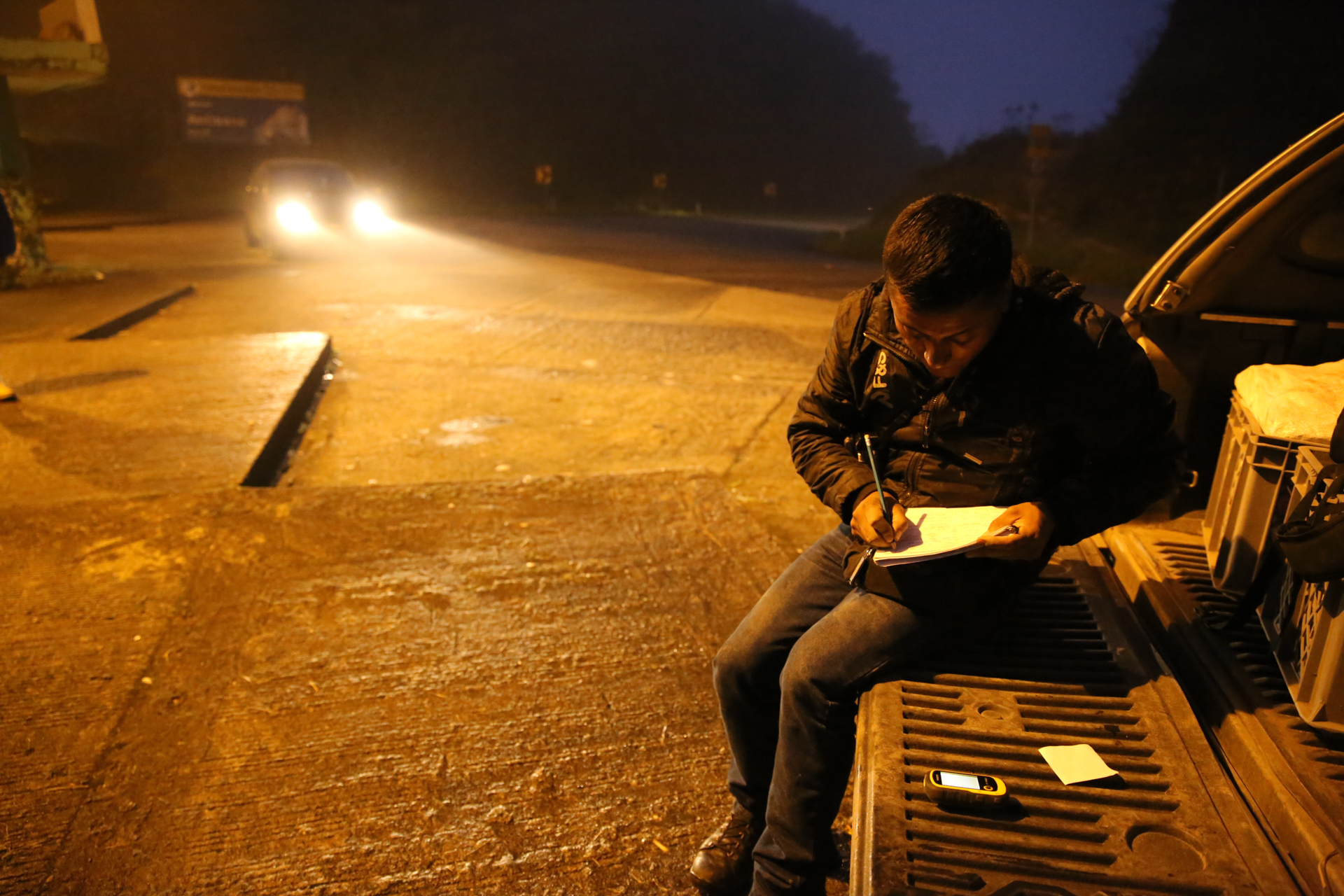-
I recently visited Ecuador where I accompanied our partners from the Instituto Nacional de Investigaciones Agropecuarias (INIAP) on a collecting expedition for crop wild relatives. In five days, we crisscrossed three provinces searching for wild potato, eggplant, rice, and sweet potato.
-
By all counts, it was a productive week: the INIAP team identified and collected seeds from ten different populations – what both Lenin Rosero and Alvaro Monteros, the seed collectors, summed up as “one of their most successful expeditions.”
-
Given the many experiences we shared, the diverse landscapes we walked through, and the various challenges endured together, we will be sharing this story in a five-part series.
This is the first one.
-
Dispatches from Ecuador
Part 1: Searching for Wild PotatoesText and photos by LM Salazar
-
Day 1. Monday morning. Stepping outside the Quito hotel lobby, I follow Lenin and Alvaro to the INIAP pick-up truck. We leave the small talk for the long drive; we have a full day ahead of us, but first we need to brave the capital’s rush hour traffic.
-
Days before, Lenin had walked me through the program: an ambitious expedition to several as-of-yet-unexplored regions in the central part of Ecuador.
-
Our first stop: the Cayambe-Coca National Park. Off the highway, up a dirt road, it’s located in the Parroquia Papallacta in Napo province, at 4,200 m.a.s.l. Lenin parks the truck and, without fanfare, the collecting begins.
-
Lenin crosses the dirt road and climbs the hill. Alvaro walks down in the opposite direction. Camera in hand, I watch them move, slowly, deliberately, with their eyes to the ground.
-
In the immensity of the place, under the sun and braving the high winds, they look like specks lost in a sea of green and yellow grasses.
-
They are searching for Solanum colombianum, a wild potato relative that can be found in the northern part of South America — from Venezuela through Colombia, into southern Ecuador.
-
“In the distance, the first thing you spot is the color of the flower; then the arrangement of the leaves, and finally the size of the plant,” says Lenin.
The collectors circle back. No Solanum colombianum in sight. We move on, parking above a small pond.
-
With the sun on our faces, at the edge of this picture-perfect scene, it feels like we’ve stepped into Eden. But as we move across the beach, clouds of mosquitoes surround us, circling our heads, manifesting their discontent at our intrusion.
-
The search continues; we stop at three more locations where herbarium collections had been made, back in the 60s, 70s and 90s. Still, no Solanum colombianum.
“Sometimes, it’s due to site disturbance. Or inexact coordinates. Sometimes impenetrable vegetation deters us from reaching a collecting spot. Other times, it’s lack of access to a private property,” says Lenin.
-
We see deer and a quick small, brown something that hides in a hole on a nearby knoll. Dung found near the pond suggests it was a paramo rabbit, prompting the INIAP folks to assume that these critters could be the reason why we still can’t find any Solanum colombianum.
-
Next stop: Laguna de Mongote, located in another section of the park.
Further up the mountain, out of the copilot’s window, Lenin spots the S. colombianum’s white tiny flowers. Just like that; reminds me of how our Italian collecting partners spotted Lathyrus tuberosus out of a moving train a couple of years back.
-
There they are: a population of 10 plants growing in the shade, next to the roof of a shed in a hollow. It baffles me how Lenin can identify these plants out of a moving car.
“You must trust your instincts,” he tells me. “Experience refines your senses and makes it easier to locate them.”
-
With big smiles on their faces, Alvaro and Lenin open the trunk of the truck and begin the collecting ritual. They work around each other, one complementing the actions of the other, with no need for words.
-
“Everything must be carried out in a detailed, systematic way,” Alvaro explains. “The more information you gather, the more useful it will be for future collectors and plant breeders, who wish to know when, where, how these plants were collected.”
-
On a side note: More recently, I joined colleagues from EMBRAPA Clima Temperado on a collecting mission in Brazil, where they too were searching for a wild potato.
Pictured here, Gustavo Heiden prepares a herbarium specimen of Solanum commersonii, found at the side of a dirt road in the southern part of Rio Grande do Sul. Behind Gustavo, thick bushes of Ulex europaeus, an invasive species, threaten the plant’s natural habitat.
-
Back to Ecuador… and back in the truck, we continue our drive towards Laguna de Mongote. It is 13:07; a locked gate blocks our path and we are forced to head back.
The search for the elusive Solanum colombianum continues.
-
“These plants grow in partly disturbed ground”, says Alvaro. “Waysides provide perfect conditions for them.”
But among the dry, yellow and brown bushes, there is still nothing to be found.
-
Thus far we’ve driven up from Quito’s 2,850 m.a.s.l. to the Park’s 4,200 m.a.s.l., then down to 3,412 m.a.s.l. Along the way, we’ve stopped at eight different collecting spots. By the end of the day, we will have driven more than 200 kilometers, and down to 516 m.a.s.l.
-
14:00 — Alvaro finds a second population. There are no fruits to be found, however. No fruits means no seeds. But the collecting team takes a live specimen.
-
Live specimens are collected and cared for in the genebank’s greenhouses until they produce seeds.
INIAP, like other partners around the world, has committed to this method of obtaining large quantities of seed to fulfill the CWR Project’s targets.
-
“It might be easy to collect thousands of seeds from some other crop wild relatives, but when it comes to wild potatoes, it is impractical and near impossible to collect sufficient seed from the wild,” says Lenin.
-
Leaving the park behind us, we begin the long ride down to Tena, the capital of Napo province. Hungry, and in need of rest, we stop at a thatched-roofed roadside restaurant. Along with our meals, Lenin orders a pitcher of “guayusa”. “Gua-what?” I ask.
Indigenous communities from the east of the country have been drinking this “water” since the beginning of time, Lenin tells me.
-
“Every day, in the early mornings, and during their long walks through the jungle. It gives them energy and vitality,” he adds. “It is said to also numb and repel snakes.”
In the following days we will be searching for wild rice in snake-country, so as a preventive measure, I drink several cups of the transparent liquid.
-
Back on the road, the dry, yellow, sun-drenched landscape of Papallacta gives way to a dense humid forest, submerged in fog.
“It’s a transitional zone, between the Sierra and the Amazonia,” explains Lenin, “at the foothills of the Cordillera de los Guacamayos.”
-
17:00 — We park at a lookout-slash-rest-stop and walk into the “Camino Antiguo de Jumandy” in search of Solanum andreanum, which can only be found in southern Colombia and Ecuador.
The daylight is fading fast; in single file, we follow the muddy trail, pushing further into the forest. We are inside the Reserva Ecológica Antisana.
-
After a 30-minute walk, the remains of a recent landslide prevent us from reaching the specific hotspot we were aiming for, where – research tells us – this wild potato should be growing.
This doesn’t deter the INIAP team.
-
Lenin and Alvaro soon find a small population of Solanum andreanum. “Fewer than 10 plants,” Lenin says. “But worth the effort.”
The flowers, smaller than the S. colombianum ones, have a deep purple color to them. But this obvious difference means little to a collector.
“You have to look at the fruit and not the flowers to identify a species,” Lenin tells me.
-
S. andreanum fruits are indeed different. More circular and smaller than those of S. colombianum, which are oval in shape and bigger by half an inch or so.
Previous to this trip, Solanun andreanum had already been collected in other regions of the Ecuadorean Sierra. “And with greater difficulty than what we’ve experienced here,” Lenin tells me.
-
So why continue the search, if they’d already collected seeds from this plant? Well, explains Alvaro, collecting from various geographic locations increases the diversity of the samples within a genebank collection and that is crucial to teasing out important genetic traits during characterization and breeding.
-
Night finds us back at the rest-area, where, by the yellow light of a lamppost, the INIAP team finishes the collecting work.
Then, through heavy fog, we drive 60 kilometers down a winding highway, to the city of Tena, where we will be sleeping this and the next night.
-
After dinner, as we drive up to the motel, I ask: “So how do you guys feel?”
“Tired,” says Lenin, “but very happy with today’s results: three sets of samples from two different species collected in one day.”
I too am tired. But looking forward to the rest of the week.
